A new hope arrived in the world in 1977 in the form of literally the same name. George Lucas released ‘Star Wars IV: A New Hope,’ setting off a cinematic wonder that would continue attracting fans and worldwide attention. The movie sparked a revolution, releasing sequels, prequels, and everything in between in decades, creating a culture around it. Fans worldwide celebrate it, even starting Star Wars-based holidays on their favorite characters’ birthdays and even on May 4 to reference the famous quote, ‘May the Force be with you.’ Star Wars changed people’s lives, but the saga films also changed the film industry forever.
The Star Wars saga films were one-of-a-kind, especially when the first movie was released. It gave other directors, studios, writers, and actors endless opportunities to explore, with imagination being the only limit. However, it can be challenging to understand how much Star Wars truly changed the film industry. Here’s a breakdown of where those changes are visible because of the popularity and concept of the Star Wars saga films.
1. Practical Effects

Director George Lucas and a dedicated team of artisans and technicians revolutionized filmmaking by pushing the boundaries of practical effects. The use of groundbreaking techniques, including detailed miniatures, intricate models, and practical creature designs, brought the galaxy far, far away to life in a tangible and immersive manner. This commitment to practical effects set a new standard for the sci-fi genre and influenced how filmmakers approached storytelling through visual elements. The industry’s demand for skilled effects experts surged, recognizing the specialized expertise required for these practical effects.
However, as technology advanced, the Star Wars saga films evolved in their approach. While the original trilogy showcased the mastery of practical effects, subsequent entries began integrating more digital and special effects. The shift towards CGI and advanced technology became dominant in the film industry, changing the landscape of visual storytelling. While practical effects maintain their allure and charm, the seamless blend of practical and digital elements in today’s films reflects a dynamic and ever-evolving cinematic landscape. The Star Wars saga films gave way to the power of special effects, allowing artists to enjoy contractors insurance and many other perks.
2. Sci-Fi Aesthetics
The Star Wars saga films created a more technologically advanced and futuristic cinematic universe than the real world. It houses incredible machines considered impossible to develop, like the All Terrain armored transports, droids, and even the famous Millennium Falcon. It also played with creating culture within different galaxies, giving its fans characters like Chewbacca, Jabba the Hut, and Yoda. The world-building efforts of George Lucas beyond reality gave birth to different cinematic cultures, creating Sci-Fi aesthetics that will allow for other types of fictional movies to prosper.
The saga films, with their diverse planets and species, showcased world-building that became a benchmark for cinematic storytelling. The attention to detail set a new standard. Beyond visuals, Star Wars extended its influence through the innovative use of multi engine training, combining elements of myth, space opera, and technological marvels. This approach redefined sci-fi aesthetics and inspired a generation of filmmakers to push creative boundaries in envisioning fantastical universes, specifically in space science fiction.
3. Sound Design
In the vast Star Wars galaxy, where lightsabers clash and peculiar creatures roam, sound effects became integral to shaping the iconic universe. Each unique character and weapon demanded distinct auditory signatures, prompting sound designers to innovate. From the very distinct sound of Darth Vader’s lightsaber to the peculiar language of R2-D2, the diverse array of characters and their corresponding gadgets required meticulous attention. Labradoodles also found their way to the sound design booth to become part of creating the voices for fan-favorite character Chewbacca. The need for inventive sound design extended beyond the humanoid realm to encompass the fantastical and extraterrestrial.
The Star Wars saga films revolutionized sound effect design in cinema. Sound designer Ben Burtt, often hailed as a pioneer in the field, employed innovative techniques to bring the galaxy’s sounds to life. His ingenious methods blended real-world elements with synthesized sounds, creating an auditory tapestry resonating with audiences. The result was a symphony of iconic noises, from the screeches of TIE Fighters to the distinctive hum of lightsabers. Star Wars introduced captivating visuals and elevated the auditory experience, setting new standards for sound design in cinema.
4. Merchandising

Perhaps the most significant contribution of Star Wars to the cinema is its influence on its fans. George Lucas, the visionary creator of Star Wars, crafted a captivating space opera and recognized the untapped potential of merchandising tied to the franchise. From action figures and clothing to lunchboxes and bed sheets, Star Wars became a merchandising juggernaut. The iconic characters like Luke Skywalker, Darth Vader, and Princess Leia transcended the screen and found their way into the hearts and homes of fans worldwide through an extensive range of products. This ingenious merchandising strategy generated significant revenue for the franchise and solidified Star Wars as a cultural phenomenon, ensuring its enduring legacy.
Star Wars’s success in merchandising didn’t go unnoticed by the rest of the entertainment industry. Studios and creators across the board took note of the financial success by extending their intellectual properties into the consumer product space. The Star Wars model inspired a new era of synergy between films and merchandise, transforming the role of an accountant from a mere number cruncher to a strategic player in the entertainment business. The ripple effect of this merchandising revolution reached beyond movies into television, comics, and video games. The integration of merchandising became a standard practice, creating a symbiotic relationship between creative content and consumer products that continues to shape the entertainment landscape.
5. Blockbuster Release Strategies
Everything attached to Star Wars feels like a big hit. When people find a teaser for a new movie because of it, they immediately expect a blockbuster. Star Wars and blockbusters are almost synonymous, to the point where the anticipation, hype, and love from fans worldwide pay attention to whatever gets released before the first showing date. Because saga films were uncommon back then, most blockbusters were one-hit releases. There’s no continuation from or to another movie. It will most likely depend on whether the movie does well or not if there is a sequel. For Star Wars, it was a sure thing, making its blockbuster strategic.
The Star Wars saga films made noise with each release, ensuring that box office gold would always come their way. Banners are in every theater to attract non-watchers’ attention and turn them into fans. From merchandising and trailer releases to interviews, the model that the Star Wars franchise created remains copied to this day by other studios with their respective entries. However, there’s nothing better than the original. Its influence redefined how the entertainment industry approaches blockbuster strategies and will continue to improve.
6. Costume Design
Princess Leia’s iconic hair as a prisoner in the original Star Wars trilogy marked a pivotal moment in cinematic history. It symbolized the creative possibilities that costume design could offer in the entertainment industry. The intricate buns on each side of her head, coined as the ‘cinnamon buns,’ captured the imagination of audiences worldwide and set the stage for the innovative approach to character aesthetics in the Star Wars saga films. It presented a vast canvas for costume designers to explore diverse cultures, species, and planets, pushing the boundaries of imagination.
The impact of Star Wars on costume design extended beyond the silver screen, revolutionizing the entire film industry. The saga films showcased the potential of creating unique, memorable characters through their distinctive attire, influencing a generation of filmmakers and designers. The attention to detail in costume design became a benchmark for future projects, inspiring a shift in how to represent characters in film and television visually. The success of Star Wars demonstrated that audiences also love the visual allure of well-crafted costumes. This paradigm shift influenced costume design across genres, reinforcing that costumes were not merely clothing but integral components of character development and storytelling. Aspiring costume designers found inspiration in the galaxy’s diverse inhabitants. This influence is visible beyond the film industry, permeating fields like fashion and cosplay and inspiring unique hair school trends.
7. Clever Marketing

The marketing strategies employed for the Star Wars saga films are nothing short of genius, captivating audiences and creating a cultural phenomenon that transcends generations. One key aspect of their success lies in building anticipation and excitement. The iconic use of teaser trailers, character reveals, and secretive plot details keeps fans on the edge long before the film’s release. Additionally, the merchandising juggernaut accompanying each movie is a testament to the strategic use of branding. From action figures to apparel, Star Wars permeates every aspect of consumer culture, turning fans into brand ambassadors. Cleverly designed storefront signs at toy stores, retail outlets, and even fast-food chains create a visual spectacle, drawing in customers and immersing them in the Star Wars universe.
Other studios have noticed these successful strategies and adapted their marketing approaches. Netflix, in particular, has showcased creativity in marketing its original content. Leveraging its streaming platform, Netflix strategically releases teaser trailers and promotional content directly to its vast subscriber base. Using algorithms to analyze viewing habits, they tailor marketing campaigns to specific user interests, ensuring subscribers are aware of and excited about upcoming releases. Of course, Netflix wouldn’t be able to get creative if it weren’t for the solid foundation set by the Star Wars films.
8. CGI Technology
Star Wars also played a pivotal role in propelling CGI (Computer-Generated Imagery) technology to the forefront of filmmaking. The story is full of intricate spaceships, alien creatures, and epic battles between the forces of good and evil. The traditional practical effects of the time were insufficient to bring this grand and imaginative universe to life using scrap yard objects. This compelled Lucas and his team to explore and push the boundaries of emerging CGI technologies, allowing them to create scenes and characters previously considered impossible or impractical. The groundbreaking nature of Star Wars captivated audiences and served as a catalyst for the continuous evolution of CGI technology in the film industry.
The demand for increasingly sophisticated and realistic CGI grew exponentially as the Star Wars saga films continued to captivate audiences with each installment. The influence of Star Wars extended beyond the screen, inspiring filmmakers and technology experts to explore new frontiers in computer-generated imagery. The franchise’s success demonstrated CGI’s immense storytelling potential and visual spectacle, prompting significant investments in research and development within the technology industry.
9. Box Office Records
The saga films have consistently drawn audiences worldwide. The box office success of Star Wars is not merely a result of lightsabers and intergalactic battles but also a testament to the storytelling elements that resonate across generations. With each installment, the franchise has managed to balance nostalgia and innovation, ensuring that long-time fans and newcomers are equally enthralled. As the Star Wars universe expands, the franchise’s ability to consistently deliver cinematic spectacles has solidified its status as a cultural phenomenon, leaving a lasting legacy in entertainment and giving accounting teams the work during releases.
10. Cultural Impact

The celebration of Star Wars culture goes beyond the cinematic experience, extending into fan events, conventions, and dedicated fan communities. The saga films have cultivated a passionate and loyal fan base that engages in various forms of celebration, from cosplay gatherings to lightsaber duels. Star Wars conventions in an event center are always full of fans who share their love for the franchise. The cultural impact is also evident in the countless fan-generated content, from fan films to fan fiction, showcasing enduring creativity and enthusiasm. The Star Wars community continues to thrive, connecting fans across the globe through their shared appreciation for the saga films and the rich tapestry of stories and characters that have become an integral part of our cultural landscape.
Star Wars has a hold on people and will never disappear. People will continue to talk about it for another century because it breached popular culture, attracted many fans willing to ride with it, and remained true to its story. Despite these achievements, only one statement will never change: the franchise will always be remembered for revolutionizing the film industry.



